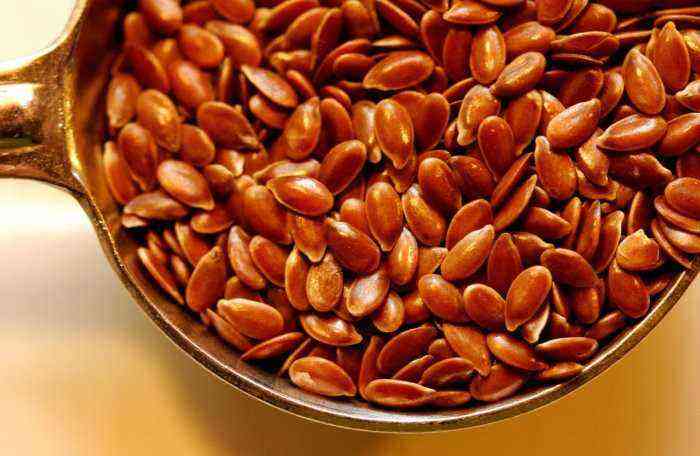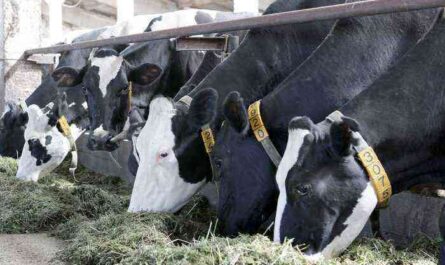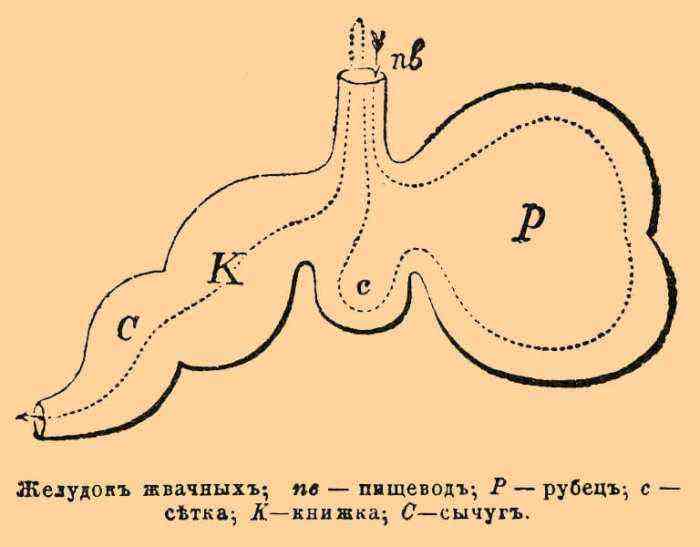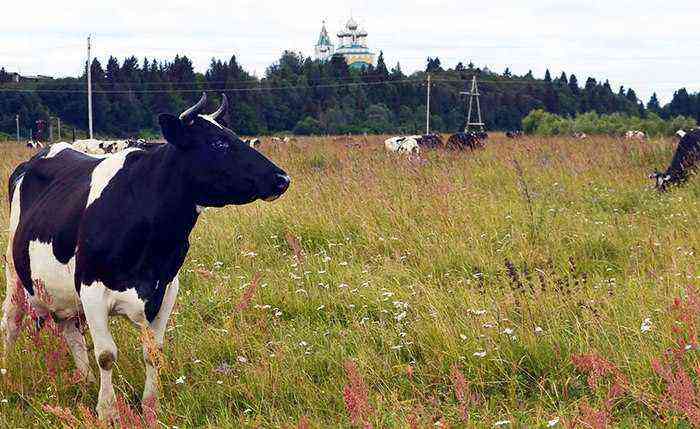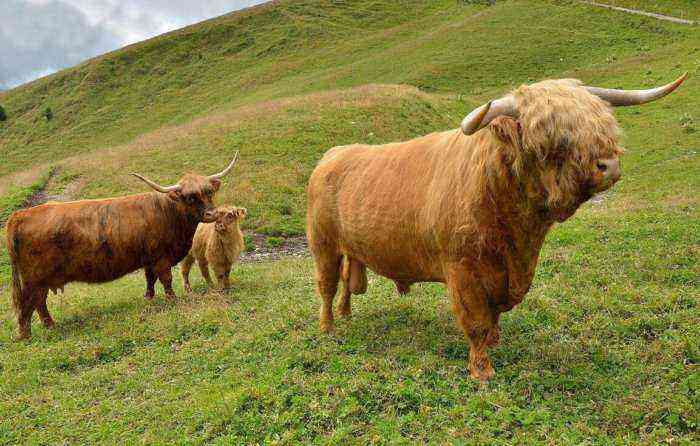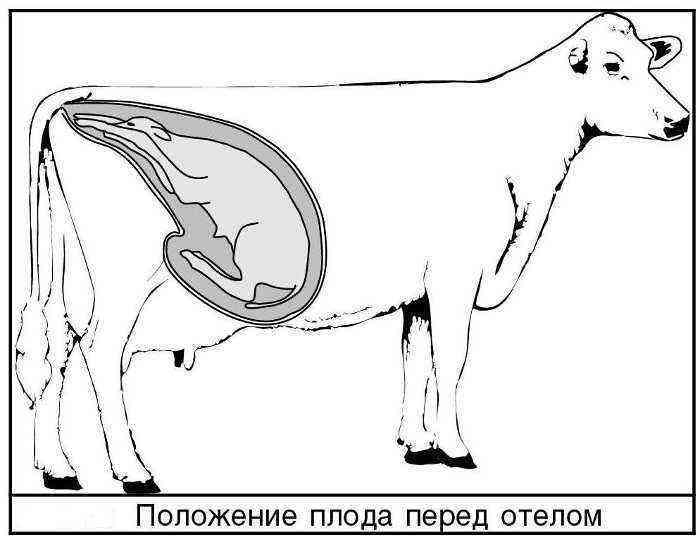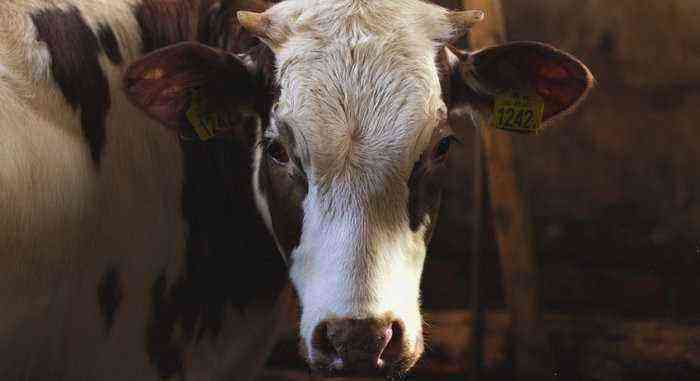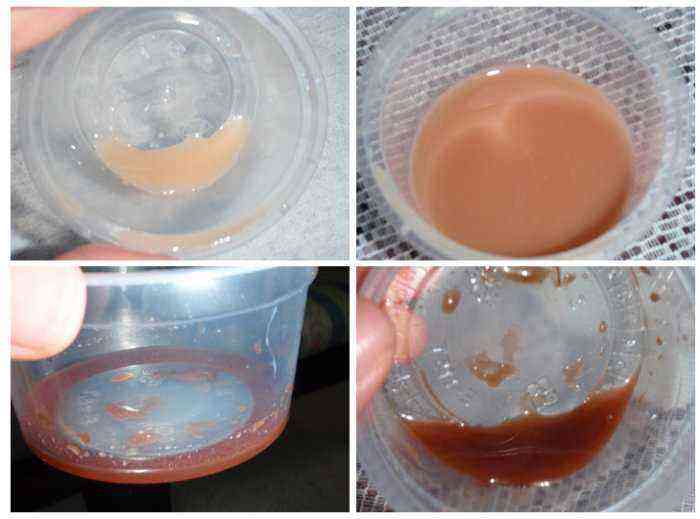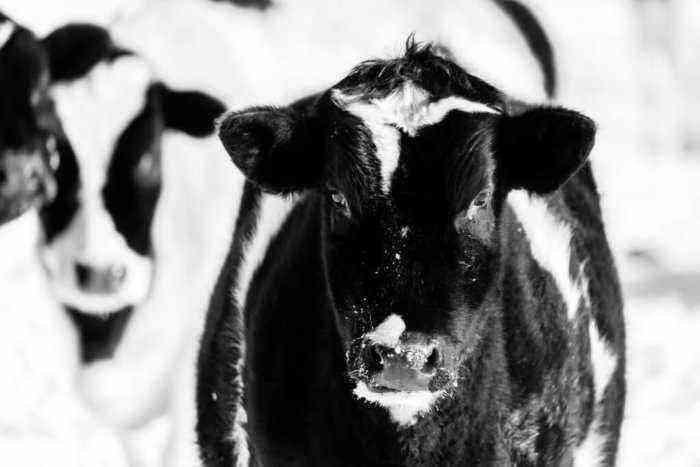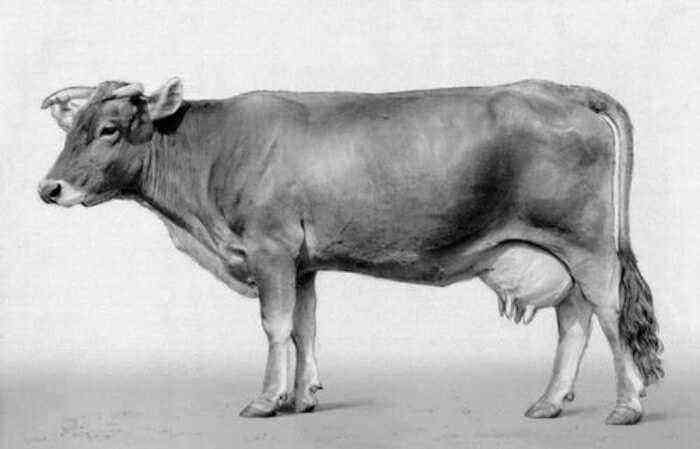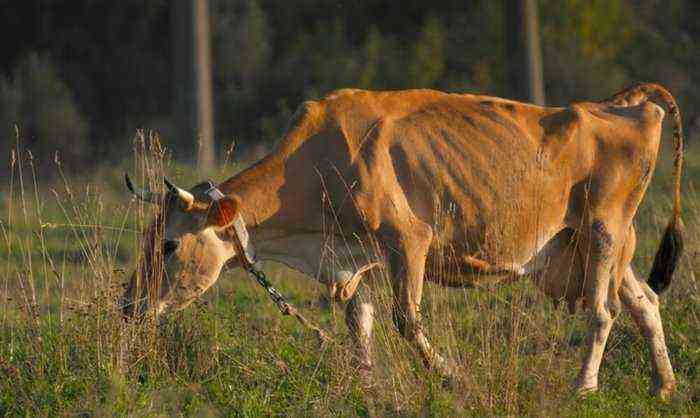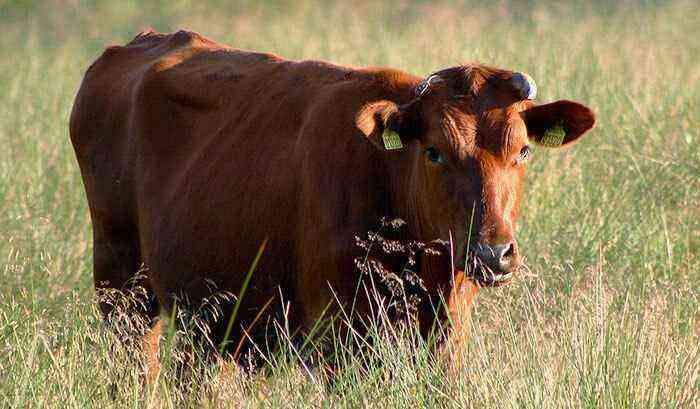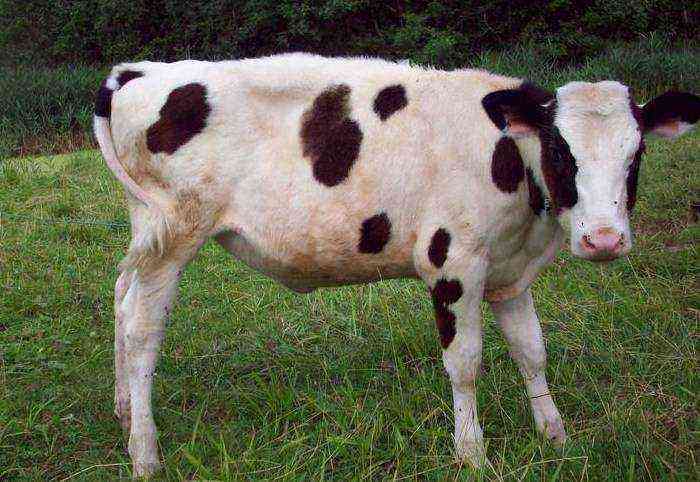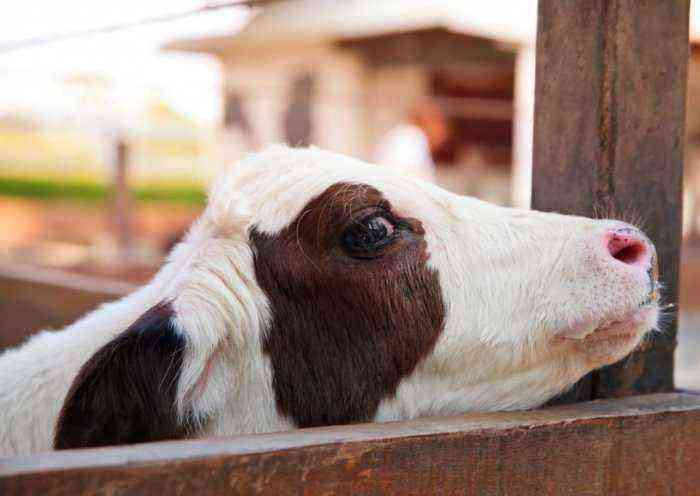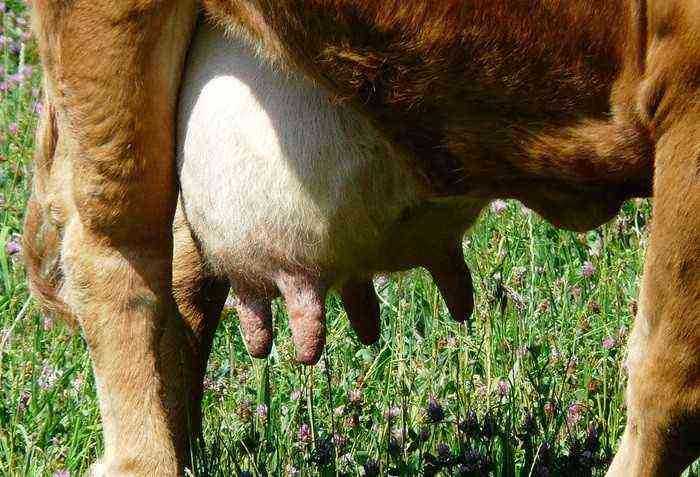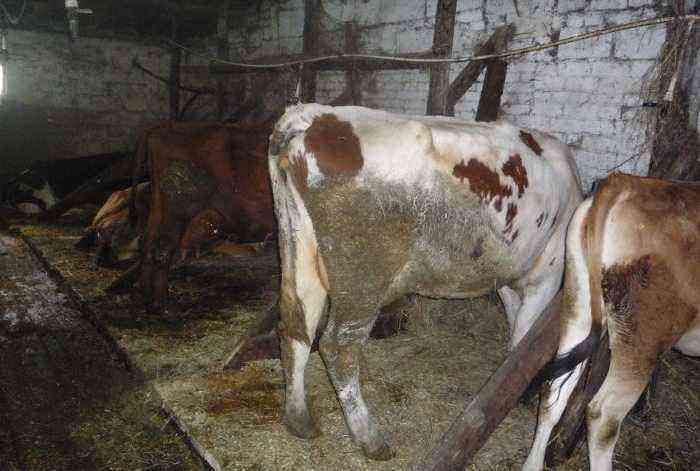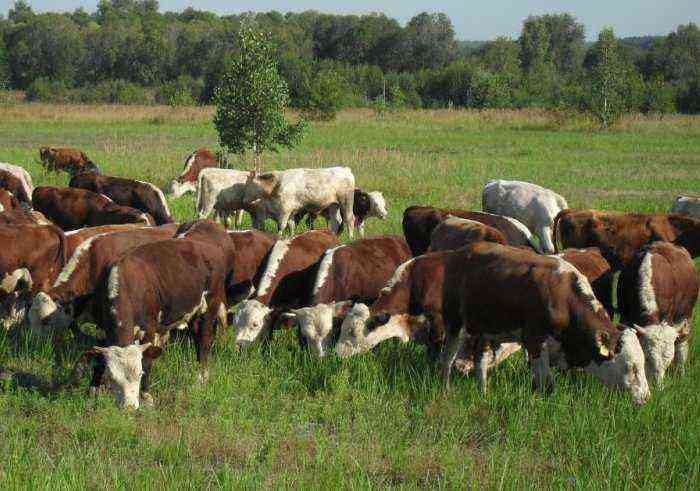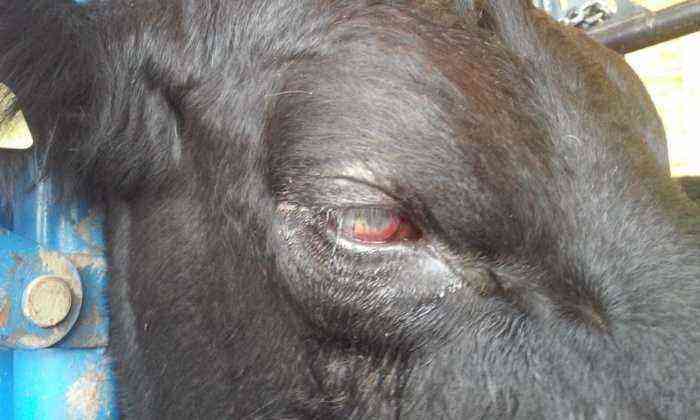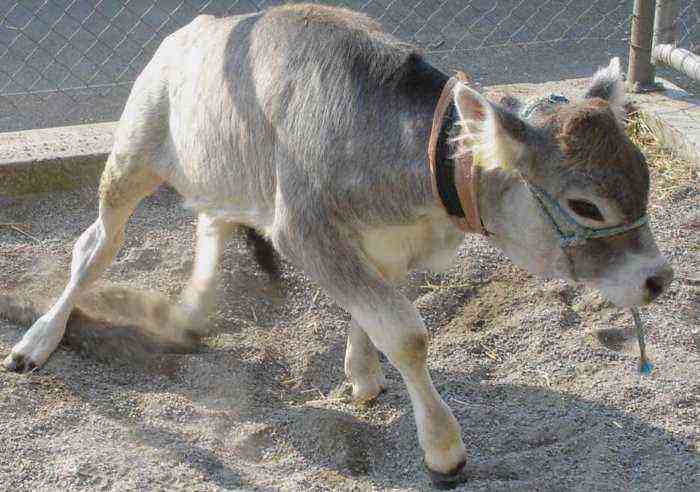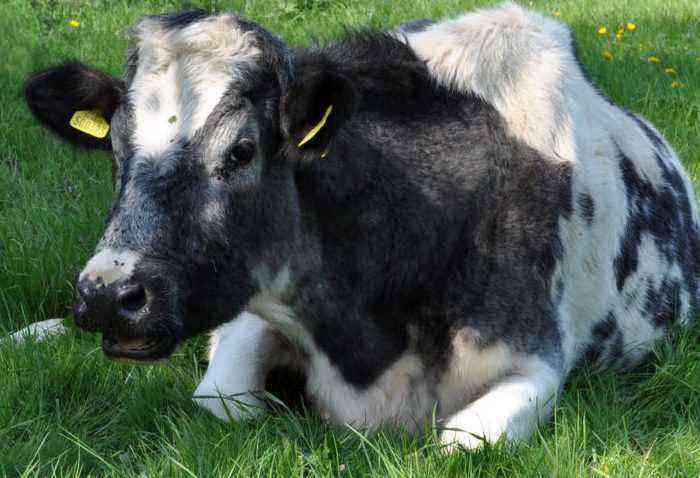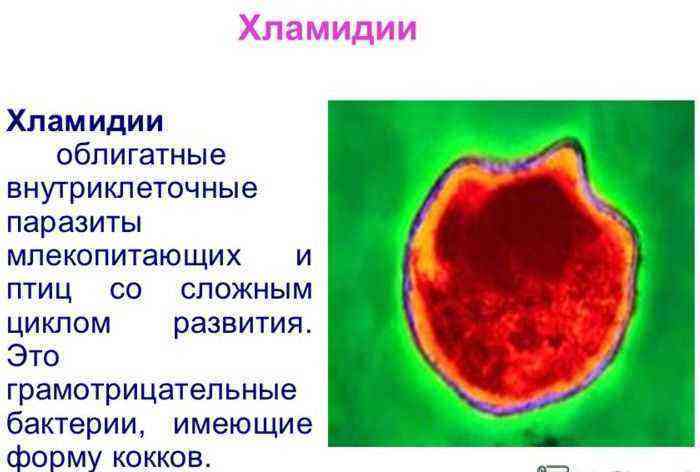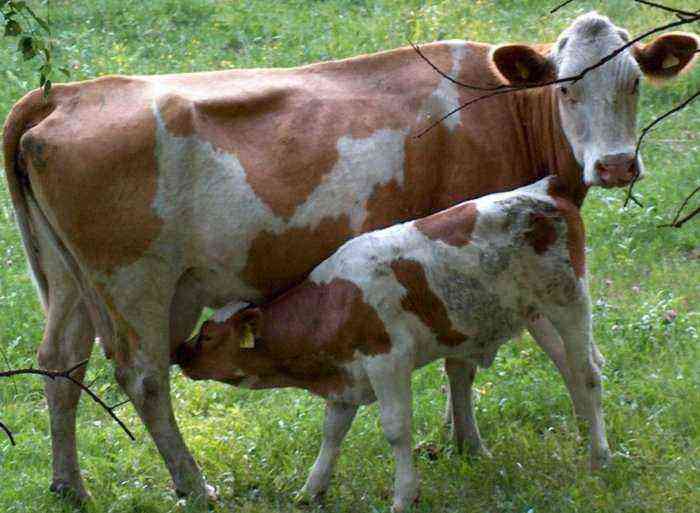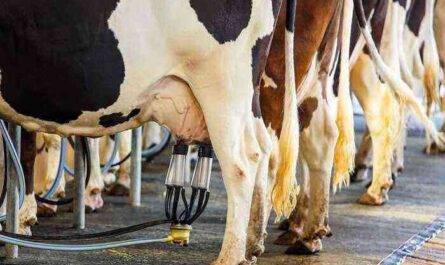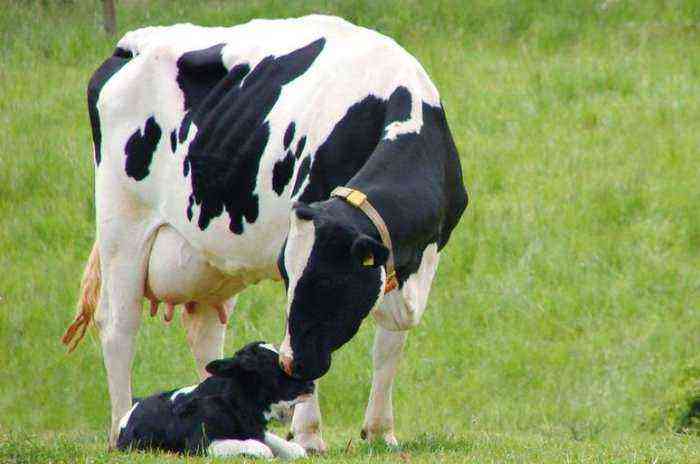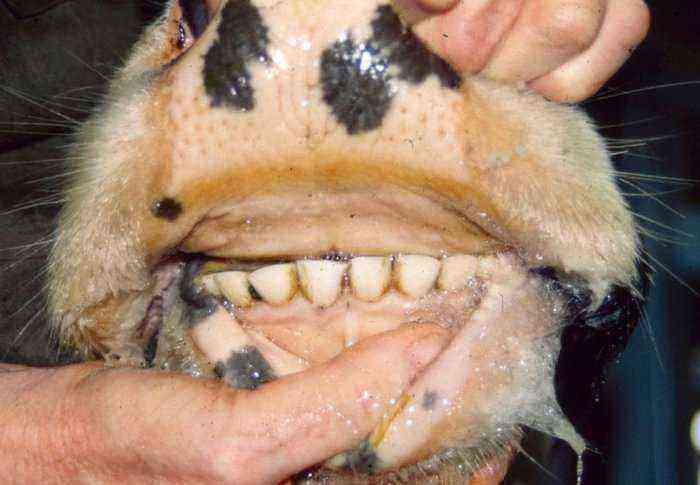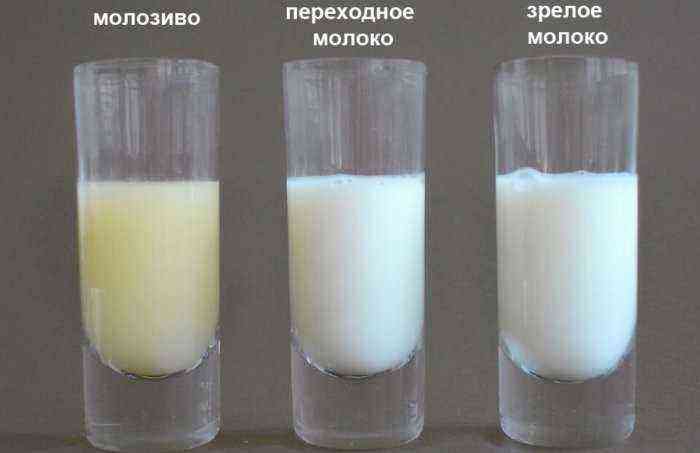Various diseases associated with infection of the body with parasites are quite common for livestock enterprises. They are especially dangerous for young calves, as the developing helminth can irrevocably reduce the future productivity and growth rate of the animal. One of these ailments is cattle dictyocaulosis, which causes serious disturbances in the functioning of the respiratory organs and, in some cases, can cause the death of a calf.
Calf after dictyocaulosis treatment
What is dictyocaulosis?
Dictyocaulosis (Dictyocauloses) is a parasitic disease that affects many species of herbivores. The helminths that cause it affect the trachea and bronchi. At the same time, bronchitis develops rapidly, developing into pneumonia.
Most often, outbreaks of the disease can be traced in the young livestock of the farm. Moreover, the frequency of occurrence of foci of the disease directly depends on the climate of the region. In the northern and central parts of the Russian Federation, cases of the disease are quite common. In the southern regions with a warm climate, only single outbreaks of the disease are recorded.
Causative agent
Dictyocaulosis in cattle is caused by a special type of roundworm called Dictyocaulus viviparus. This is a white nematode, the length of which can be from 3 to 5 cm. The causative agent of the disease is localized in the trachea and bronchi.
The entire process of development of the parasite occurs without changing the host. In doing so, it goes through the following steps:
- The helminth develops in the respiratory organs of cattle and, upon reaching a certain age, lays eggs in them.
- Over time, due to the production of a large amount of exudate in the lungs and bronchi, the cow begins to cough. Accordingly, the mucus, along with the eggs, is transported to the oral cavity of the animal.
- From here, the larvae that have not yet hatched enter the intestines, where their residual ripening takes place.
- Further, the larvae, together with the feces, are released into the external environment. Here, at a temperature of 10-28 degrees, the larvae pass two molts within 3-5 days and go into the stage of readiness for re-infection. In this form, they can live in the external environment for 2 months, from where they then enter the body of livestock.
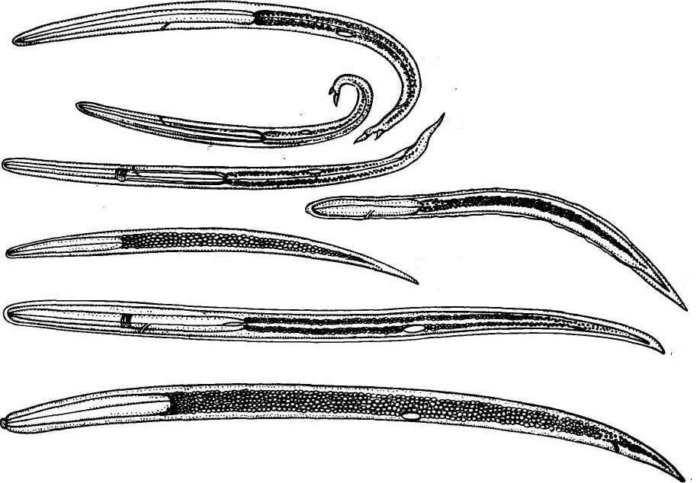
Dictyocaulus viviparus
Ways of infection
The main source of infection is an infected animal. Parasites enter the external environment along with feces. In pastures, such feces are washed away by rain, which releases the larvae and carries them with water over a wide area. Also, many researchers confirm that in the larval stage, the helminth is able to move independently at a distance of up to 50 cm.
There is a theory that various insects, for which feces are one of the types of food, contribute to the spread of the invasive form of the nematode. But this assumption has not been definitively proven.
Calves become infected with larvae mainly when eating green fodder. This can occur both directly on the pasture, and when feeding livestock with grass during stall keeping. Also, helminths can be found in large quantities in meadow puddles and dirty water bodies.
The process of infection occurs in the following sequence:
- The larva in the invasive stage, when swallowed by a cow, enters the intestines.
- Here, the pathogen gnaws its way into the tissues located under the intestinal mucosa, and further into the blood vessels.
- With the bloodstream, the larvae are transported through the liver, heart and lungs to the bronchi.
- In the bronchi, the parasite settles and continues to grow until it reaches sexual maturity. After that, the whole process is repeated.
Infection of cattle occurs mainly in the summer during grazing. A strong drop in temperature from late autumn to early spring leads to the destruction of all larvae remaining on pastures, and it can be used again the next year.

Infection occurs more often during grazing
It is worth noting that worms can live in the body of an animal from 1,5 months to 1 year. With the onset of autumn, female nematodes stop laying eggs, but they remain viable, remaining in the lymph nodes of cows. In the spring, the resistance of the organism of livestock may fall due to violations of the conditions for keeping animals. At this time, the parasite wakes up again and moves to the lungs.
Symptoms
Dictyocaulosis in young calves is more acute, but in adults, clinical signs are well expressed. In general, the condition of livestock and the severity of symptoms depend on the extent of infection of the animal.
In the case of an increased concentration of helminths in the body, the calf quickly loses weight, it develops anemia, the skin in the chest and legs becomes covered with edema. With an average degree of invasion, the disease becomes chronic. The state of health of the cow is not so difficult, but there are frequent changes in the normal and painful state. With a minimum number of nematodes in the body, the disease can proceed latently.
Among the general clinical signs characteristic of dictyocaulosis are:
- general depression of the animal, which is manifested by a sharp decrease in activity and lack of interest in surrounding stimuli;
- lack of appetite;
- diarrhea;
- within 2 weeks, a mild cough develops, which gradually intensifies and eventually passes more painfully;
- increased breathing;
- when listening to the chest of the animal, wheezing and crackling are clearly audible;
- a large amount of mucous exudate is released from the nasal cavity;
- body temperature can vary between 39-41 degrees.
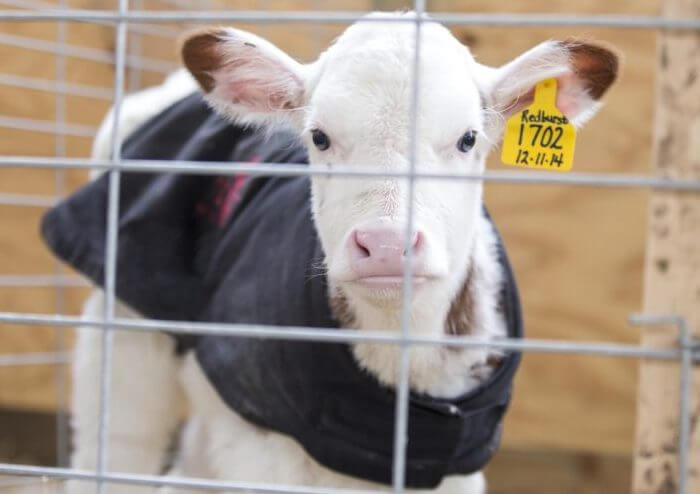
Sick calf in quarantine
In especially severe cases, the disease is supplemented by a number of the following symptoms:
- the animal falls to the side, lies motionless and does not react at all to what is happening around;
- severe cough, which is manifested by prolonged painful attacks;
- mouth is constantly open;
- heavy breathing with wheezing;
- foam in large quantities from the mouth.
As a rule, such a course of the disease quickly ends with the death of the cow, the cause of which is suffocation. Also, often the defeat of the bronchi leads to bronchopneumonia and emphysema.
It is worth noting that dictyocaulosis greatly weakens the body of the animal. This leads to the fact that against the background of the first helminthic disease, a number of secondary diseases develop, caused by the development of pathogenic microflora or viruses.
Attention! Also, in the case of a latent course of the disease, the animal can simply act as a virus carrier and spreader of the disease. But in the case of deterioration in the conditions of keeping animals and a decrease in resistance, the disease quickly turns into an acute form.
Diagnostics
It is extremely difficult to diagnose dictyocaulosis in cattle due to the fact that the clinical signs of the disease are similar to a number of other diseases of the respiratory organs. Even the presence of dictyocauluses in the bronchi does not allow for a residual diagnosis, since they may not be the cause, but only an aggravating factor in the main lung lesion. In this case, laboratory research, analysis of clinical signs, pathological changes and the exclusion of similar diseases are taken into account.
For study in the laboratory, the feces of an infected animal are taken. Most often, it is removed from the rectum of livestock, however, in some cases, it is allowed to collect stale excrement (but no later than 8 hours after being released into the external environment). The main thing in this case is to take into account the features of the physiological development of the helminth, which will help to isolate it and distinguish it from other possible pathogens.
The study of the material is carried out by microscopy or by the Berman method. Also often used is larvoscopy, in which the goal of the laboratory assistant is to detect helminth eggs. This method does not work only in the autumn-winter period, when female nematodes stop laying eggs.

Laboratory research
As for the characteristic pathological changes, they include:
- anemia of the mucous membranes of the oral and nasal cavities;
- pronounced signs of exhaustion of the body;
- lungs, significantly enlarged and gray in color;
- lymph nodes in the bronchi, greatly enlarged in size;
- a large amount of fluid accumulated in the bronchi and trachea, in which white nematodes are traced;
- multiple mucous plugs in the bronchi;
- pinpoint hemorrhages in the intestine;
- enlarged heart.
Also, when opening the chest of dead cattle, signs of catarrhal or purulent pneumonia can be detected.
In the case of differential diagnosis, first of all, pneumonia caused by other reasons is excluded. So, if the cause of inflammation is poor conditions of detention, then the main lesions are concentrated in the anterior lobes of the organ. With pneumonia of a parasitic nature, the inflammatory process is localized in the posterior lobes. According to characteristic criteria, it is necessary to exclude salmonellosis, bronchitis, strongyloidiasis and a number of other diseases from the list.
Treatment
The first thing to do in the treatment of dictyocaulosis is to eliminate the cause of the disease – nematodes that parasitize in the bronchi and trachea. The most common means for their inactivation is a solution of crystalline iodine. It is prepared according to the following scheme:
- The volume of crystalline iodine is diluted in 1,5 volumes of potassium iodide with the addition of a small amount of water. This is done exclusively in dark dishes with thick walls.
- Further, distilled water is poured into the mixture in a ratio of 1500 to 1.
- The resulting composition is heated to a temperature of 27-30 degrees.
This solution is prepared immediately before use. In this case, it is injected directly into the trachea with a syringe. The injection site before the procedure itself is carefully cut off and disinfected with alcohol. The injection must be done as carefully as possible so as not to cause a cough reaction in the cow.
In order for the prepared preparation to hit the exact location of the helminths, the calf is laid on its back at a slight angle. The approximate dosage of the solution for an individual under the age of one year is 80 ml. For one-year-old animals, the rate increases to 130 ml. The course of treatment is two injections.
But it is worth noting that today such a drug for deworming livestock is used quite rarely. Most often used for this purpose:
- Loxuran (40% solution). The product is sterilized and injected under the skin of the animal. One dose is 1,25 ml for every 10 kg of weight. The procedure is repeated a second time a day after the first.
- Diveside. Three sachets of the product are diluted in 750 ml of boiled water. The resulting mixture is boiled for about 5 minutes. The dosage of the drug is 1,5 ml per 10 kg of live weight.
- Ditrazine citrate (25% solution in water). After sterilization, the drug is injected under the skin of the calf at a dosage of 2 ml per 10 kg of body weight. Injections are made once a day for the first two days, and after that – another injection with a pause per day.

Ditrazine citrate is effective in disease
Of the well-known foreign drugs, Fenbendazole and Ovitgelm are often used. They are used in accordance with the instructions attached to the drug.
In cases where inflammation of the lungs or bronchopneumonia has already developed in the process of parasitizing nematodes, these complications are treated before starting deworming. A good effect is given by Novarsenol or Rivanol. Also, the result can be achieved by feeding the animal 0,5 g of streptocide. The course of treatment is 3 days. The drug is administered to the cow three times a day.
Before starting any treatment measures, the infected animal must be transferred to a separate dry and warm room without drafts. At the same time, the machine in which the cow was kept is thoroughly cleaned of feces and food residues.
Attention! At the end of deworming in a new place, the cattle is kept in it for another 6 days. At the same time, all the manure that the cow gives is disposed of separately from the rest of the mass.
A mandatory addition to the listed therapeutic measures is a full-fledged balanced diet, enhanced for the period of the entire treatment. It will provide an increase in the body’s resistance, which in itself will lead to a sharp weakening of the parasites. In cases with minimal invasion, cattle often recover when conditions improve even without the use of medications.
Prevention
The key to successful prevention of dictyocaulosis in cattle is the provision of high-quality sanitary and veterinary conditions for its maintenance. The main measures in this direction include the following points:
- keeping cows and young animals exclusively in warm barns, with high-quality bedding;
- regular cleaning of manure, feed residues, animal litter;
- providing a complete diet for livestock in accordance with a specific age group;
- use when feeding exclusively high-quality feed stocks without traces of rot, freezing and mold;
- regular periodic inspection of the livestock by a veterinarian for the presence of invasion;
- use as pastures only meadows safe for dictyocaulosis;
- observance of a 30-day quarantine for all cattle that are brought into the farm from other farms
Since cattle calves are especially susceptible to such a helminthic disease, there are a number of specific preventive measures for them that must be taken into account. First of all, it is necessary to organize the grazing of young animals that were born this year, separating them from last year’s calves. The last category was already free-range and could be infected with nematodes. Also, at first, it is required to prepare separate rooms for fresh offspring and individual runs to pastures.
An effective preventive measure can be periodic preventive treatment of the entire herd from parasites. It should be carried out throughout the entire period of stay of cows on pastures. Moreover, in the process of treatment, it is imperative to take into account the features and stages of development of the helminth, which will allow you to deal with it more effectively. The most common deworming scheme is the following:
- twice a year (spring and autumn) the main procedure is carried out;
- every month of grazing, a forced fight against worms is carried out if characteristic signs of the disease are detected.
Livestock grazing is best on dry pastures. If there are none on the ground, marshy areas should be drained. Before grazing, be sure to take a soil sample, which is checked in the laboratory. Also, before grazing and before the start of the stall period, a mandatory check of cows for the presence of invasion is carried out. In young calves, it is desirable to carry out such diagnostics every 15-20 days throughout the pasture content.

Soil sample
If during the sampling survey signs of dictyocaulosis were noted, a thorough examination of the entire livestock is carried out. At the same time, all infected individuals are immediately transferred to quarantine, and the premises in which they were kept are cleaned and disinfected.
Dictyocaulosis can cause serious damage to livestock enterprises and personal farmsteads that contain livestock. In addition to the fact that such a disease spreads quickly, it is also able to quickly deplete young animals, which often ends in the death of the animal. That is why the livestock owner must clearly know the main signs of the disease and how to deal with it.

